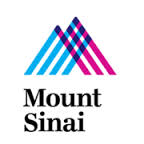Surgical Implantation of TRAnscatheter vaLve in Native Mitral Annular Calcification (SITRAL) Study
| Status: | Recruiting |
|---|---|
| Healthy: | No |
| Age Range: | 22 - Any |
| Updated: | 8/23/2018 |
| Start Date: | September 2016 |
| End Date: | December 2019 |
| Contact: | Kristen Chionh, M.S |
| Email: | Kristen.Chionh@bswhealth.org |
| Phone: | 469-814-4736 |
The purpose of this study is to establish the safety and feasibility of the Edwards SAPIEN 3
valve in subjects with mitral annular calcification (MAC) associated with mitral stenosis
(MS) and/or mitral regurgitation who are at high-risk for mitral valve surgery or deemed
inoperable due to the extent of calcification.
valve in subjects with mitral annular calcification (MAC) associated with mitral stenosis
(MS) and/or mitral regurgitation who are at high-risk for mitral valve surgery or deemed
inoperable due to the extent of calcification.
Technical Success:
Alive, with
- Successful access, delivery and retrieval of the device delivery system, and
- Deployment and correct positioning (including repositioning/recapture if needed) of the
single intended device, and
- No need for additional unplanned or emergency surgery or re-intervention related to the
device or access procedure
Device Success:
Alive and stroke free, with
- Original intended device in place, and
- No additional surgical or interventional procedures related to access or the device
since completion of the original procedure (i.e., exit from the cath lab/Operating
Room(OR)), and
- Intended performance of the device:
- Structural performance: No migration, embolization, detachment, fracture,
hemolysis, thrombosis (including reduced leaflet motion) or endocarditis, etc, and
- Hemodynamic performance: Maintenance of relief of stenosis or insufficiency without
producing the opposite (Stenosis = Mitral Valve Area (MVA) < 1.5cm2 and Mitral
Valve (MV) gradient > 5mmHg, Insufficiency = Mitral Regurgitation (MR) >1+), and
- Absence of para-device complications (e.g., Paravalvular Leak (PVL) > mild, need
for a Permanent Pacemaker (PPM), erosion, Annular rupture or Aortic Valve (AV)
Groove disruption, Left Ventricular Outflow Tract (LVOT) gradient increase >
10mmHg)
Procedural Success:
Device success, and
- No device or procedure related Serious Adverse Events (SAEs) (Life threatening bleed;
major vascular or cardiac structural complications requiring unplanned reintervention or
surgery; stage 2 or 3 Acute Kidney Injury (includes new dialysis); Myocardial Infarction
(MI) or need for percutaneous coronary intervention (PCI)/coronary artery bypass graft
(CABG); severe heart failure (HF) or hypotension requiring intravenous (IV) inotrope,
ultrafiltration or mechanical circulatory support; prolonged intubation ( > 48 hours)
6.2 Secondary objective(s)
Device Success (at 6 months and 1 year)
- Subject success 1 year
Device Success:
Alive and stroke free, with
- Original intended device in place, and
- No additional surgical or interventional procedures related to access or the device
since completion of the original procedure (i.e., exit from the cath lab/Operating Room
(OR)), and
- Intended performance of the device:
- Structural performance: No migration, embolization, detachment, fracture,
hemolysis, thrombosis (including reduced leaflet motion) or endocarditis, etc, and
- Hemodynamic performance: Maintenance of relief of stenosis or insufficiency without
producing the opposite (Stenosis = MVA < 1.5cm2 and MV gradient > 5mmHg,
Insufficiency = MR >1+), and
- Absence of para-device complications (e.g., PVL > mild, need for a PPM, erosion,
Annular rupture or AV Groove disruption, LVOT gradient increase > 10mmHg)
Alive, with
- Successful access, delivery and retrieval of the device delivery system, and
- Deployment and correct positioning (including repositioning/recapture if needed) of the
single intended device, and
- No need for additional unplanned or emergency surgery or re-intervention related to the
device or access procedure
Device Success:
Alive and stroke free, with
- Original intended device in place, and
- No additional surgical or interventional procedures related to access or the device
since completion of the original procedure (i.e., exit from the cath lab/Operating
Room(OR)), and
- Intended performance of the device:
- Structural performance: No migration, embolization, detachment, fracture,
hemolysis, thrombosis (including reduced leaflet motion) or endocarditis, etc, and
- Hemodynamic performance: Maintenance of relief of stenosis or insufficiency without
producing the opposite (Stenosis = Mitral Valve Area (MVA) < 1.5cm2 and Mitral
Valve (MV) gradient > 5mmHg, Insufficiency = Mitral Regurgitation (MR) >1+), and
- Absence of para-device complications (e.g., Paravalvular Leak (PVL) > mild, need
for a Permanent Pacemaker (PPM), erosion, Annular rupture or Aortic Valve (AV)
Groove disruption, Left Ventricular Outflow Tract (LVOT) gradient increase >
10mmHg)
Procedural Success:
Device success, and
- No device or procedure related Serious Adverse Events (SAEs) (Life threatening bleed;
major vascular or cardiac structural complications requiring unplanned reintervention or
surgery; stage 2 or 3 Acute Kidney Injury (includes new dialysis); Myocardial Infarction
(MI) or need for percutaneous coronary intervention (PCI)/coronary artery bypass graft
(CABG); severe heart failure (HF) or hypotension requiring intravenous (IV) inotrope,
ultrafiltration or mechanical circulatory support; prolonged intubation ( > 48 hours)
6.2 Secondary objective(s)
Device Success (at 6 months and 1 year)
- Subject success 1 year
Device Success:
Alive and stroke free, with
- Original intended device in place, and
- No additional surgical or interventional procedures related to access or the device
since completion of the original procedure (i.e., exit from the cath lab/Operating Room
(OR)), and
- Intended performance of the device:
- Structural performance: No migration, embolization, detachment, fracture,
hemolysis, thrombosis (including reduced leaflet motion) or endocarditis, etc, and
- Hemodynamic performance: Maintenance of relief of stenosis or insufficiency without
producing the opposite (Stenosis = MVA < 1.5cm2 and MV gradient > 5mmHg,
Insufficiency = MR >1+), and
- Absence of para-device complications (e.g., PVL > mild, need for a PPM, erosion,
Annular rupture or AV Groove disruption, LVOT gradient increase > 10mmHg)
Inclusion Criteria:
- Subject has severe native mitral annular calcification associated with mitral stenosis
and/or regurgitation. Qualifying echo must be within 60 days of the date of the
procedure.
- Subject has a clinical indication for mitral valve replacement, as demonstrated by
reported New York Heart Association (NYHA) Functional Class II or greater.
- The subject is at least 22 years old.
- The Heart Team agrees that the subject is high risk or inoperable for surgical mitral
valve repair or replacement (MVR), based on a conclusion that the probability of death
or serious, irreversible morbidity exceeds the probability of meaningful improvement.
The following concomitant procedures, are allowed: MAZE, Tricuspid Valve Procedures
(TVP), and Atrial Fibrillation (AF) ablation, coronary artery bypass grafting and
septal myectomy.
- The study subject has been informed of the nature of the study, agrees to its
provisions and has provided written informed consent as approved by the Institutional
Review Board (IRB) of the respective clinical site.
- The study subject agrees to comply with all required post-procedure follow-up visits
Exclusion Criteria:
- Evidence of an acute myocardial infarction (MI) ≤ 30 days before the intended
treatment [defined as: Q wave MI, or non-Q wave MI with total CK elevation of CK-MB ≥
twice normal in the presence of MB elevation and/or troponin level elevation (WHO
definition)].
- Any therapeutic invasive cardiac procedure resulting in a permanent implant that is
performed within 30 days of the index procedure (unless part of planned strategy for
treatment of concomitant coronary artery disease).
- Leukopenia (white blood cell count < 2000 cell/mL), acute anemia (hemoglobin < 8
g/dL), or thrombocytopenia (platelet count < 50,000 cell/mL).
- Hemodynamic or respiratory instability requiring vasoactive medications, mechanical
ventilation at time of procedure.
- Need for emergency surgery for any reason.
- Severe left ventricular dysfunction with Left Ventricular Ejection Fraction (LVEF) <
30%.
- Severe right ventricular dysfunction
- Pregnancy, lactation, or planning to become pregnant
- Echocardiographic evidence of left ventricular mass, thrombus, or concerns of active
infective endocarditis.
- Active upper gastrointestinal (GI) bleeding within 3 months prior to procedure without
treatment or 30 days prior to procedure with definitive treatment.
- A known contraindication or hypersensitivity to all anticoagulation regimens, or
inability to be maintained on oral anticoagulant following the study procedure.
- End stage renal disease requiring dialysis
- Clinically (by neurologist) or neuroimaging confirmed stroke or transient ischemic
attack (TIA) within 30 days of the procedure.
- Estimated life expectancy < 12 months
We found this trial at
5
sites
Charlottesville, Virginia 22903
(434) 924-0311

Principal Investigator: Gorav Ailawadi, MD
Phone: 434-243-7654
University of Virginia The University of Virginia is distinctive among institutions of higher education. Founded...
Click here to add this to my saved trials
Indianapolis, Indiana 46290
Principal Investigator: David Heimansohn, MD
Phone: 317-583-7804
Click here to add this to my saved trials
1428 Madison Ave
New York, New York 10029
New York, New York 10029
(212) 241-6500

Principal Investigator: Ahmed El-Eshmawi, MD
Phone: 212-241-8905
Icahn School of Medicine at Mount Sinai Icahn School of Medicine at Mount Sinai is...
Click here to add this to my saved trials
Click here to add this to my saved trials
Wynnewood, Pennsylvania 19096
Principal Investigator: Scott Goldman, MD
Phone: 484-476-8514
Click here to add this to my saved trials